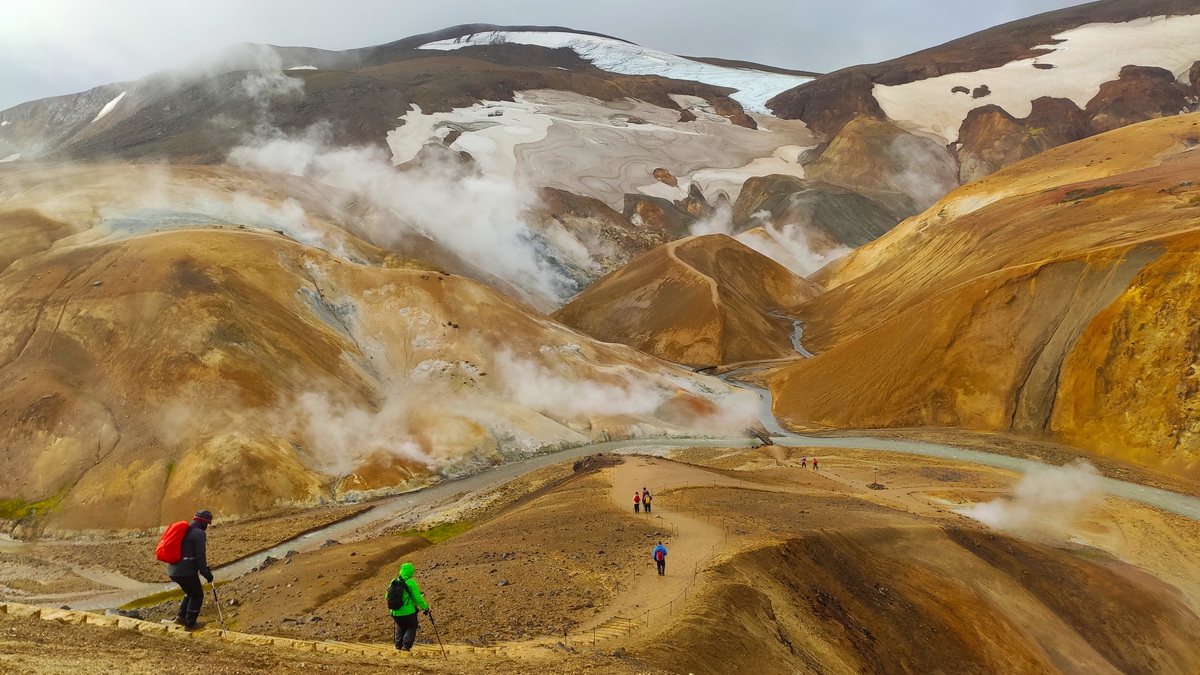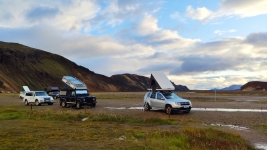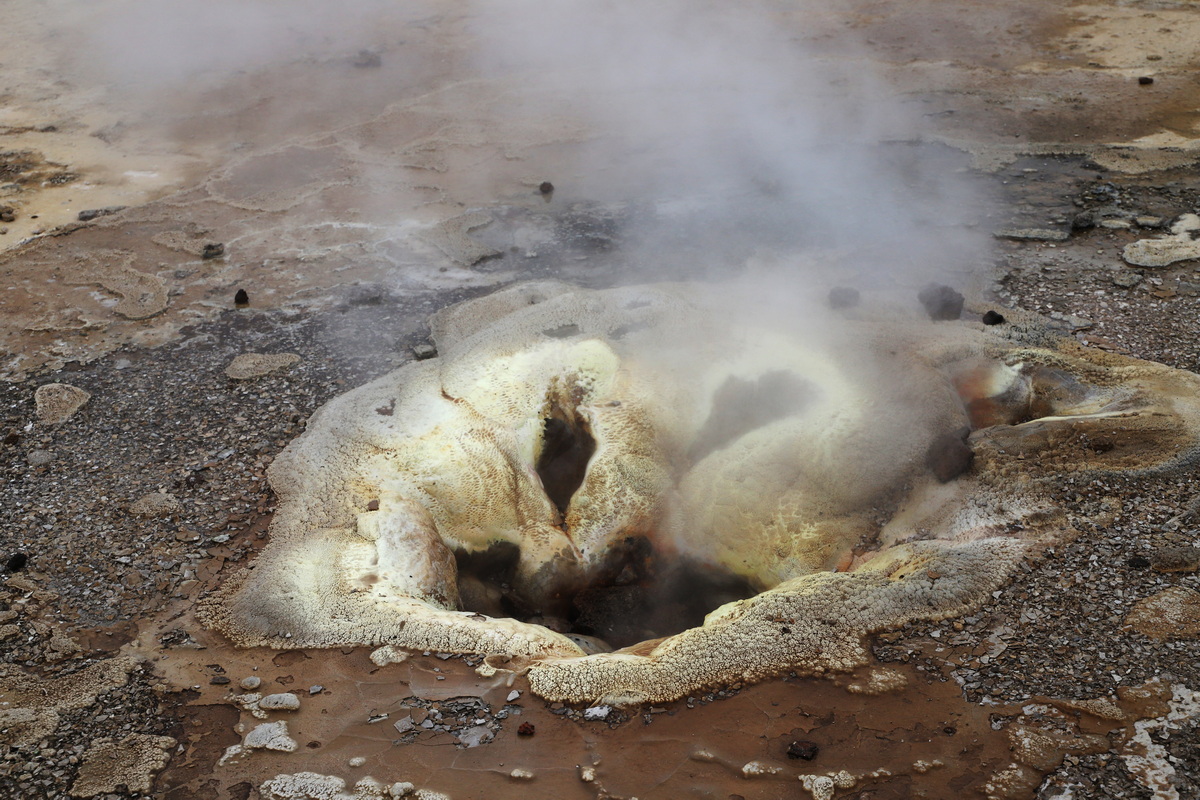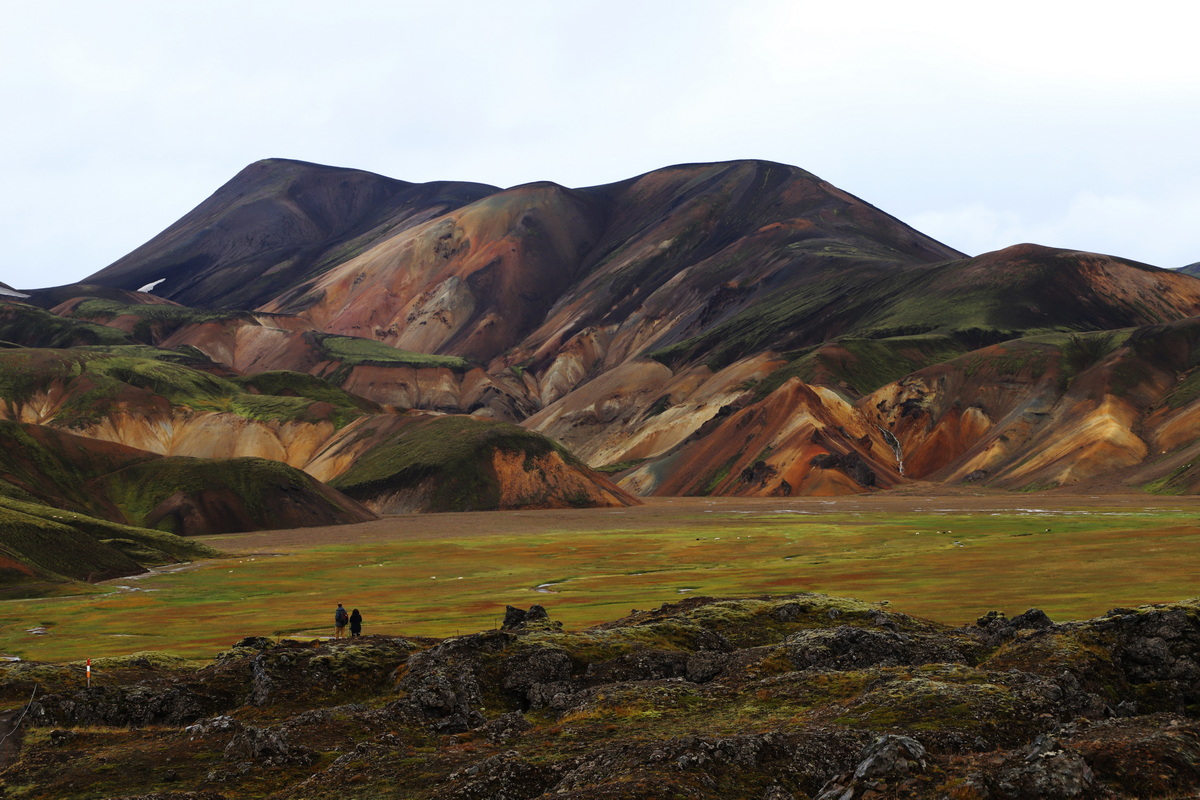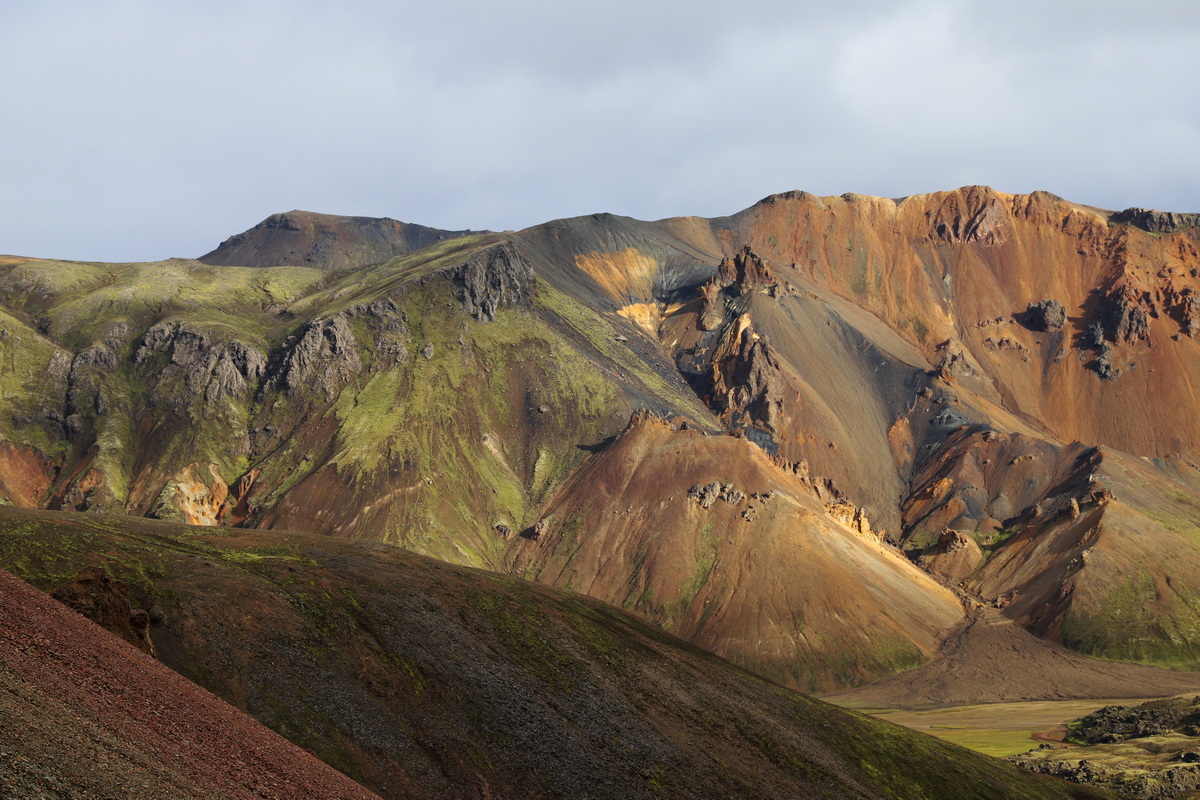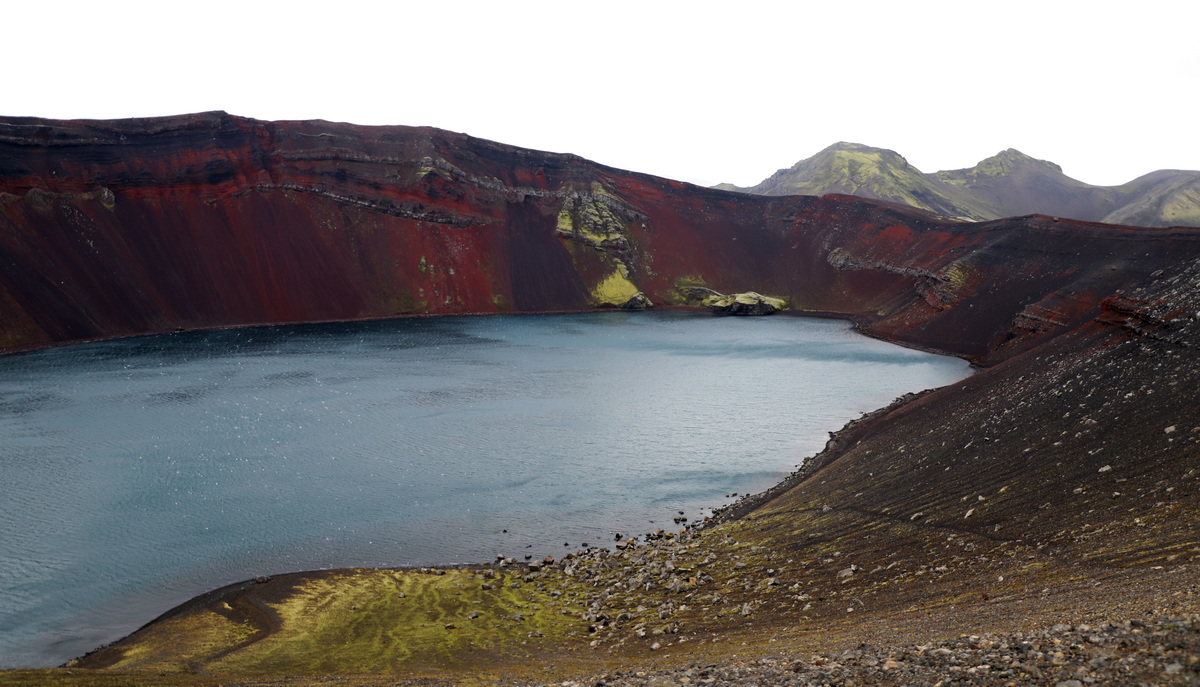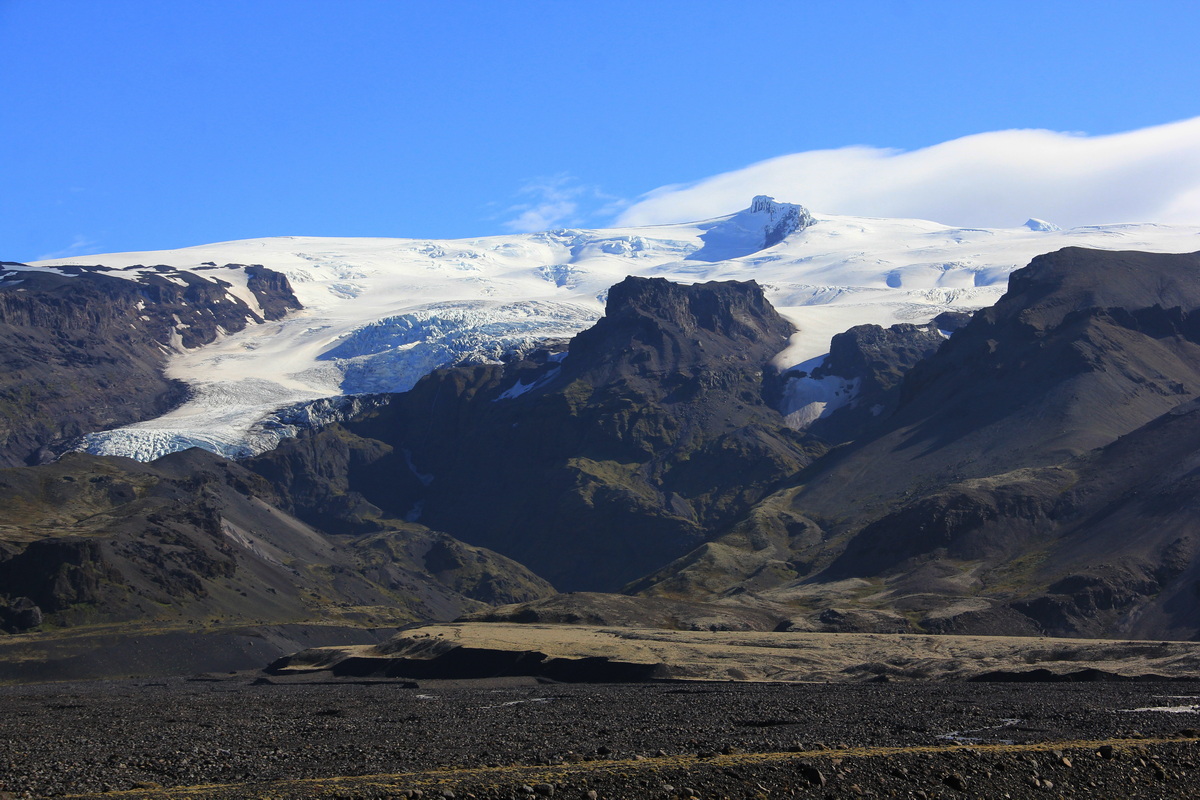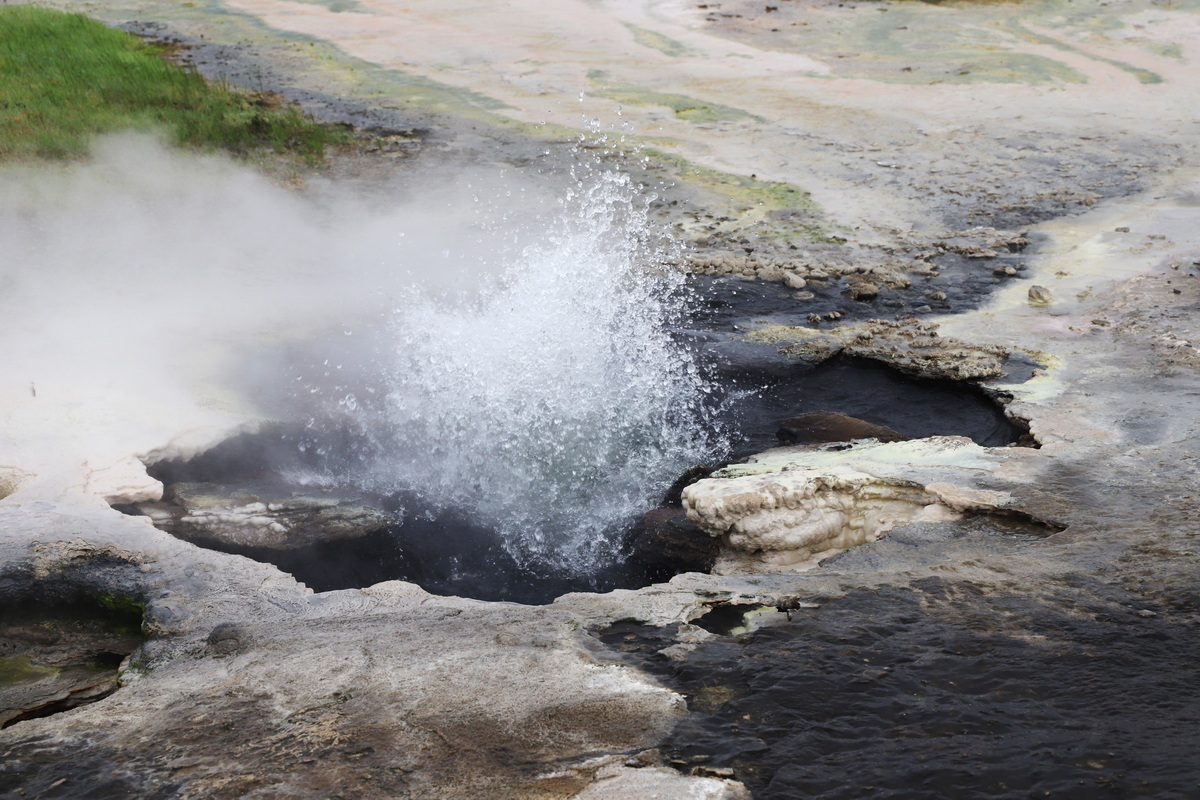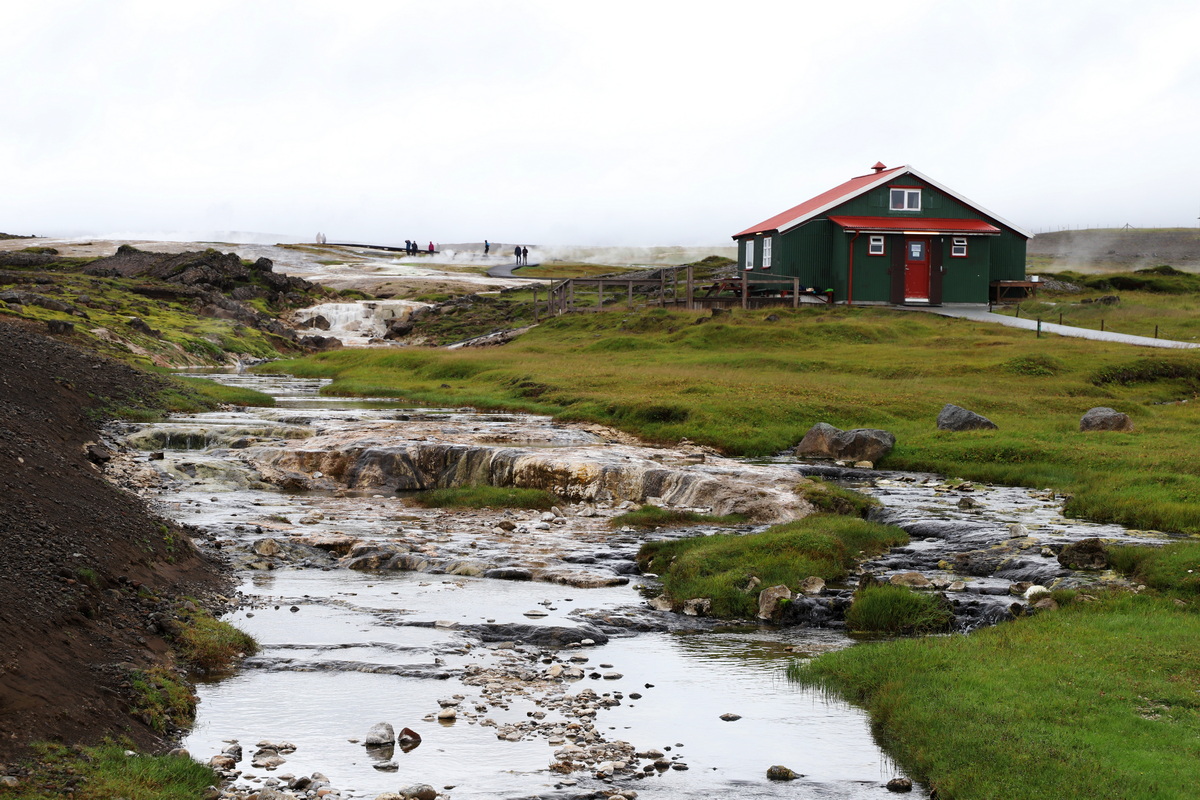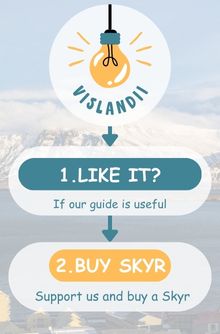For those seeking adventure, Iceland's remote highlands are a stunning playground. Imagine exploring vast, untouched landscapes shaped by nature's forces. You can stand before towering mountains, ride snowmobiles on glaciers, observe active volcanoes, and walk near steamy geothermal areas.
- What Are Iceland's Highlands?
- Where Are Iceland's Highlands?
- What Are Highland F-Roads?
- How to Visit Iceland's Highlands?
- Is It Worth Visiting Iceland's Highlands?
- Landmannalaugar: A Geothermal Wonderland in Iceland's Highlands
- Askja: Exploring Iceland's Volcanic Marvel
- Langjökull Glacier: Exploring Iceland's Icy Heart
- Hveravellir Nature Reserve: Iceland's Geothermal Oasis
- Kerlingarfjöll and Hveradalir: A Geothermal Wonderland in Iceland
- Þórsmörk: Nature's Hidden Gem in Iceland
- Tips for Exploring the Highlands
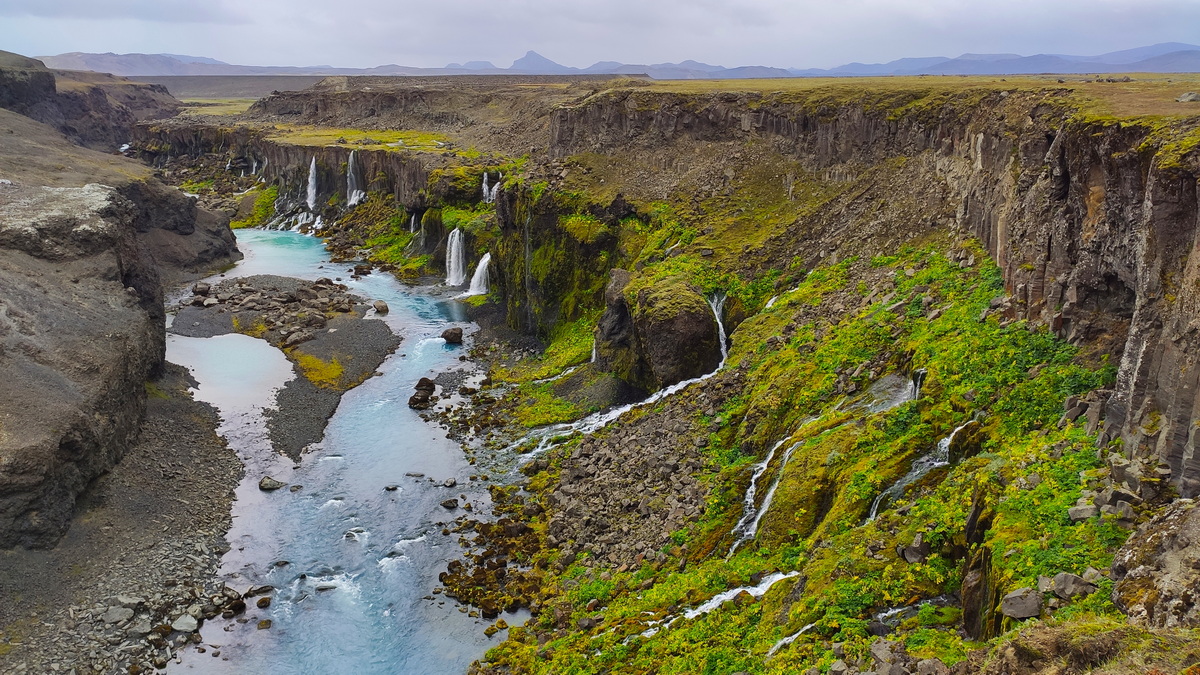
Venturing into Iceland's central highlands is a true adventure. Be prepared for rugged mountain roads and lengthy journeys. But the untamed beauty of one of Europe's largest uninhabited areas makes it worthwhile.
Read on for expert advice on how to explore Iceland's highlands.
What Are Iceland's Highlands?
Iceland's highlands, a vast expanse covering around 40,000 square kilometers, are a rugged testament to volcanic forces. This untamed region, positioned above the Mid-Atlantic Ridge, boasts a surreal landscape. Here, you'll find towering volcanoes, winding canyons, bubbling hot springs, cascading waterfalls, and sprawling lava fields. Despite its remoteness, the highlands of Iceland are a treasure trove of breathtaking beauty, with a rich palette of vibrant colors that adorn the land.
Where Are Iceland's Highlands?
Nestled at the heart of Iceland, the highlands are a natural marvel accessible from all directions. However, crossing through this wild terrain is not for the faint of heart. Iceland's primary highway, Route 1, encircles the entire island, deliberately avoiding the highlands due to their challenging, untamed landscape. The absence of major roads in this region adds to its mystique and allure.
What Are Highland F-Roads?
Journeying into Iceland's highlands inevitably introduces you to F-roads, unpaved mountain routes known for their rugged and uneven terrain. These roads, often challenging to traverse, are a unique feature of the highlands. To navigate F-roads, it's imperative to have a sturdy 4x4 vehicle, as they may even cross rivers along the way. These roads offer intrepid travelers a gateway to some of Iceland's most remote and pristine landscapes.
F-roads - all you need to know
Discovering the highlands on F-roads in a 4x4 car ...
How to Visit Iceland's Highlands?
Exploring Iceland's highlands can be tailored to your travel preferences. If you're an experienced driver with a penchant for adventure, a self-drive tour is an option. You can embark on your journey at your own pace, navigating the challenging terrain with care. Alternatively, you can opt for a guided trip led by a seasoned professional who not only handles the driving but also shares valuable insights into Iceland's geological wonders. The highlands' unique geological features come to life under the guidance of an expert, making for an enriching and immersive experience.
Is It Worth Visiting Iceland's Highlands?
Absolutely! If you crave adventure and want to explore Iceland's most incredible landscapes away from the crowds, the highlands are a must-visit. Be prepared for rough roads and thrilling experiences.
Here are some incredible places to explore in Iceland's highlands:
Landmannalaugar: A Geothermal Wonderland in Iceland's Highlands
How to Reach Landmannalaugar: Landmannalaugar, a geothermal oasis in the heart of Iceland's highlands, is accessible through various routes. One of the popular ways to reach this unique destination is by embarking on the F208 F-road from the south, which is usually open from June to September, depending on weather conditions. Visitors can also join guided tours departing from Reykjavik, which provide transportation to and from this remote location. It's essential to have a 4x4 vehicle for self-drivers, as the roads leading to Landmannalaugar can be challenging and may involve river crossings.
When Is the Best Time to Visit? The ideal time to visit Landmannalaugar is during the summer months, typically from late June to early September when the F-roads are open, and the weather is milder. During this period, the highlands burst into life with vibrant colors, making it the perfect season to witness the awe-inspiring landscapes.
Interesting Facts About Landmannalaugar:
-
Geothermal Wonders: Landmannalaugar is renowned for its natural geothermal wonders, including hot springs and bubbling mud pools. The area's name translates to "The People's Pools," referring to the soothing geothermal pools where visitors can unwind.
-
Hiking Paradise: The region offers a wealth of hiking opportunities, with trails suitable for all levels of hikers. One of the most famous routes is the Laugavegur Trail, a multi-day trek connecting Landmannalaugar to Þórsmörk, passing through a diverse range of landscapes.
-
Colorful Mountains: The mountains surrounding Landmannalaugar are an artist's dream, boasting a riot of colors, particularly thanks to the rhyolite minerals present in the rocks. The vibrant reds, blues, and greens create a surreal and unforgettable backdrop.
-
Rustic Accommodations: Landmannalaugar offers basic accommodations in the form of campsites and mountain huts, providing a rustic yet charming experience for those who wish to stay overnight in this remote area.
-
Bathe in Nature's Spa: Don't miss the chance to relax in Landmannalaugar's natural hot springs. Surrounded by rugged wilderness, it's a unique opportunity to soak in warm, mineral-rich waters while taking in the raw beauty of the highlands.
-
Remote Beauty: Despite its remote location and challenging access, Landmannalaugar is a popular destination for those seeking unspoiled natural beauty and the chance to explore Iceland's untamed wilderness.
Visiting Landmannalaugar is not only an opportunity to witness the raw beauty of Iceland's highlands but also a chance to immerse yourself in the therapeutic embrace of its geothermal wonders. This unique destination promises an unforgettable adventure in one of the most stunning landscapes Iceland has to offer.
Askja: Exploring Iceland's Volcanic Marvel
How to Reach Askja: Askja, a volcanic masterpiece situated within Vatnajökull National Park in Iceland's highlands, is accessible via the mountainous F88 road. The road is usually open from late June to early September, depending on weather conditions. To reach Askja, one typically drives through the lunar-like landscapes and the desolate black sands of the Holuhraun lava field. It's essential to have a sturdy 4x4 vehicle to tackle the rugged terrain and river crossings along the way.
When Is the Best Time to Visit? The best time to visit Askja is during the summer months when the F88 road is open and accessible. Late June to early September offers milder weather and extended daylight hours, providing the ideal conditions for exploration.
Interesting Facts About Askja:
-
Diverse Crater Lakes: Askja is home to two incredible crater lakes: Öskjuvatn and Víti. Öskjuvatn is a massive lake with a depth of approximately 220 meters (720 feet) and is one of the deepest lakes in Iceland. Víti, meaning "Hell," is a striking turquoise lake located in a volcanic crater. Visitors can even take a dip in its geothermally heated waters.
-
Volcanic Eruptions: Askja's most significant historical eruption occurred in 1875, leading to the formation of the Öskjuvatn lake. The eruption also caused the crater floor to sink, creating the Víti crater. This event was significant in Iceland's geological history.
-
Breathtaking Desolation: As you approach Askja, you'll traverse the vast Holuhraun lava field, created during a volcanic eruption in 2014-2015. The eerie expanse of black sands and solidified lava flows creates a surreal, otherworldly landscape.
-
Spectacular Geological Features: The stark beauty of Askja's surroundings showcases Iceland's unique geology, including rugged mountain ranges, glacial rivers, and barren expanses that have been shaped by centuries of volcanic activity.
-
Challenging Terrain: The journey to Askja is not for the faint of heart, with river crossings and rough roads. However, this challenging terrain rewards adventurers with the chance to witness one of Iceland's most pristine and unspoiled landscapes.
-
Astronaut Training: In 1967, NASA astronauts trained in Askja due to its similarities to the lunar landscape. The desolation and barrenness of the area made it an ideal training ground for space exploration.
Visiting Askja offers an extraordinary opportunity to explore the volcanic heart of Iceland. From its stunning crater lakes to the surreal lava fields, this remote destination promises an adventure like no other. For those willing to venture into its challenging terrain, Askja reveals the true essence of Iceland's wild and untamed beauty.
Langjökull Glacier: Exploring Iceland's Icy Heart
How to Reach Langjökull Glacier: Langjökull, Iceland's second-largest glacier, is accessible from various directions. One of the primary routes is through the Husafell area in West Iceland, and the other is along the Golden Circle route in South Iceland. Visitors can embark on guided tours that provide transportation to the glacier. These tours typically include snowmobiling and exploring the ice tunnels within Langjökull.
When Is the Best Time to Visit? The best time to visit Langjökull Glacier is during the summer months, from June to September, when the weather is milder, and the glacier is more accessible. This season offers ideal conditions for snowmobiling and exploring the ice tunnels.
Interesting Facts About Langjökull Glacier:
-
Snowmobiling Adventures: Langjökull Glacier is a snowmobiler's paradise. Visitors can experience the thrill of snowmobiling on the glacier's icy expanse while enjoying breathtaking views of surrounding ice valleys and the Eiríksjökull table mountain.
-
Journey into the Glacier: An extraordinary feature of Langjökull is the ice tunnels and chambers carved into the glacier. The "Into The Glacier" tour allows visitors to descend into these tunnels, offering a unique perspective on the glacier's interior.
-
Panoramic Views: The drive to Langjökull rewards travelers with stunning vistas of the remote and untouched landscapes stretching across East Iceland. The journey itself is a part of the adventure, with jaw-dropping scenes along the way.
-
Combined Adventures: A visit to Langjökull Glacier can be complemented with side trips to other natural wonders, including nearby waterfalls, lava caves, and geothermal pools. Depending on which part of the glacier you explore, you can base yourself in either Husafell, West Iceland, or along the Golden Circle route in South Iceland.
-
Remote Wilderness: Langjökull Glacier is situated in a remote and pristine area of Iceland. Its untouched beauty and sense of isolation make it a captivating destination for those seeking authentic, off-the-beaten-path experiences.
-
Environmental Significance: Iceland's glaciers play a vital role in maintaining the country's ecosystem. They serve as natural water reservoirs and sources for glacial rivers that flow into fertile valleys.
Visiting Langjökull Glacier offers a unique opportunity to explore the icy heart of Iceland. Whether you're racing across the glacier on a snowmobile, descending into its hidden chambers, or simply reveling in the breathtaking panoramas, Langjökull presents a mesmerizing adventure that showcases the rugged beauty of Iceland's interior.
Hveravellir Nature Reserve: Iceland's Geothermal Oasis
How to Reach Hveravellir Nature Reserve: Hveravellir Nature Reserve, a natural geothermal wonderland nestled in Iceland's central highlands, is accessible via the Kjölur route, also known as the Kjalvegur road. This 200-kilometer-long (125-mile) mountain pass connects the Varmahlíð area in the north with the Golden Circle area in the south. It's important to note that Hveravellir is only reachable during the summer months when the route is open, typically from late June to early September.
When Is the Best Time to Visit? The optimal time to visit Hveravellir Nature Reserve is during the summer season when the Kjölur route is accessible. From late June to early September, visitors can fully appreciate the geothermal marvels and stunning landscapes while enjoying milder weather conditions.
Interesting Facts About Hveravellir Nature Reserve:
-
Geothermal Wonderland: Hveravellir, which translates to "Hot Spring Fields," is named after its extraordinary geothermal features. The reserve boasts smoking fumaroles and bubbling hot springs in a surreal, otherworldly landscape.
-
Remote Location: The journey to Hveravellir is an adventure in itself, with the Kjölur route flanked by the Langjökull and Hofsjökull glaciers. This remote location allows visitors to immerse themselves in the wilderness and experience the untamed heart of Iceland.
-
Vivid Geothermal Colors: The geothermal areas within the reserve showcase a stunning display of colors, including hot springs in shades of blue, red, and green. These vivid hues are created by the minerals and microorganisms present in the geothermal water.
-
Natural Hot Springs: Hveravellir features a naturally heated geothermal pool where visitors can soak and unwind amidst the rugged wilderness. The pool's water is comfortably warm, providing a unique experience in the midst of Iceland's raw beauty.
-
Gateway to the Highlands: Hveravellir serves as a gateway to the central highlands of Iceland, offering a glimpse into the unique geology and untouched landscapes that define this region.
-
Environmental Significance: The geothermal areas of Hveravellir play a crucial role in Iceland's ecosystem. They contribute to the mineral-rich geothermal water that sustains the delicate balance of the country's natural environment.
-
Moody and Mystical Atmosphere: The skies above Hveravellir often feature dramatic weather conditions, creating a moody and mystical atmosphere that adds to the reserve's allure.
Visiting Hveravellir Nature Reserve provides a chance to immerse yourself in Iceland's geothermal wonders and experience the rugged, untouched beauty of the central highlands. The surreal landscapes, colorful geothermal features, and the chance to relax in a natural hot spring make Hveravellir a destination unlike any other in Iceland.
Kerlingarfjöll and Hveradalir: A Geothermal Wonderland in Iceland
How to Reach Kerlingarfjöll and Hveradalir: Kerlingarfjöll and Hveradalir, a captivating mountain range and geothermal valley, are located in the central highlands of Iceland. To reach this unique destination, one typically travels along the Kjölur route, also known as the Kjalvegur road, which connects the Varmahlíð area in the north to the Golden Circle area in the south. This mountain pass is open during the summer season, from late June to early September. It's important to have a 4x4 vehicle for this journey, as the route involves river crossings and rough terrain.
When Is the Best Time to Visit? The best time to visit Kerlingarfjöll and Hveradalir is during the summer months when the Kjölur route is open. From late June to early September, the weather is milder, and visitors can fully appreciate the vibrant landscapes and the geothermal wonders of Hveradalir.
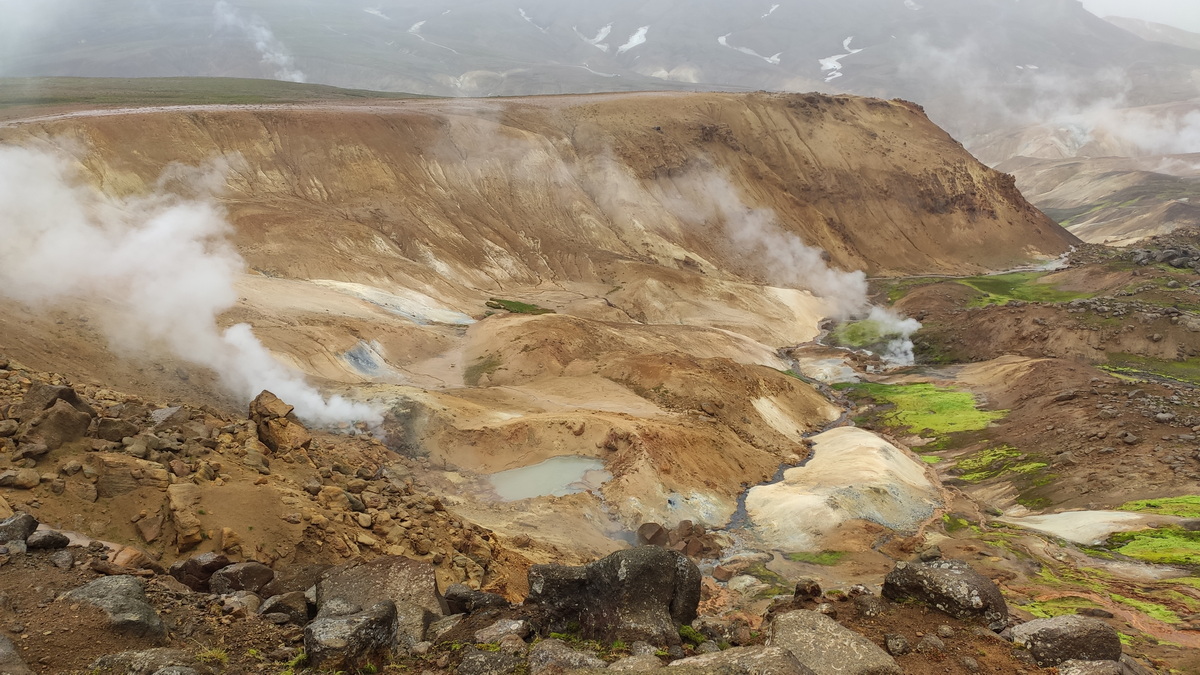
Interesting Facts About Kerlingarfjöll and Hveradalir:
-
Reddish Rhyolite Mountains: Kerlingarfjöll is renowned for its striking rhyolite mountains, which are often tinged with shades of red. These colorful mountains create a dramatic and captivating landscape in contrast to the rugged Icelandic highlands.
-
Hveradalir Geothermal Valley: Hveradalir, located within the Kerlingarfjöll range, is a geothermal wonderland. The valley is dotted with bubbling mud puddles, steaming vents, and clouds of rising steam, creating an ethereal and surreal atmosphere.
-
Volcanic Highlands: The entire area is a testament to Iceland's volcanic past, with volcanic activity shaping the landscape and creating the geological wonders seen in Kerlingarfjöll and Hveradalir.
-
Hiking Paradise: Kerlingarfjöll offers a network of hiking trails suitable for all levels of hikers. The trails wind through mountain ridges, providing breathtaking views of winding streams, snow-dusted peaks, and the unique geothermal features of Hveradalir.
-
Unique Geothermal Colors: The geothermal areas in Hveradalir showcase an array of colors, including striking shades of red, indicative of the rhyolite rock formations. These colors, combined with the steam and bubbling mud, create a surreal and memorable scene.
-
Unspoiled Wilderness: The journey to Kerlingarfjöll and Hveradalir takes visitors through pristine and unspoiled wilderness, providing a sense of isolation and a chance to experience Iceland's untamed heart.
-
Geothermal Bathing: While in Hveradalir, visitors can enjoy a dip in the naturally heated geothermal pool, surrounded by the raw beauty of the Icelandic highlands. It's a unique opportunity to relax in warm, mineral-rich waters in this remote setting.
Kerlingarfjöll and Hveradalir offer a one-of-a-kind adventure into the geothermal wonders and dramatic landscapes of Iceland's central highlands. The vibrant colors, captivating geothermal features, and the opportunity to explore untouched wilderness make this destination a must-visit for those seeking an authentic Icelandic experience.
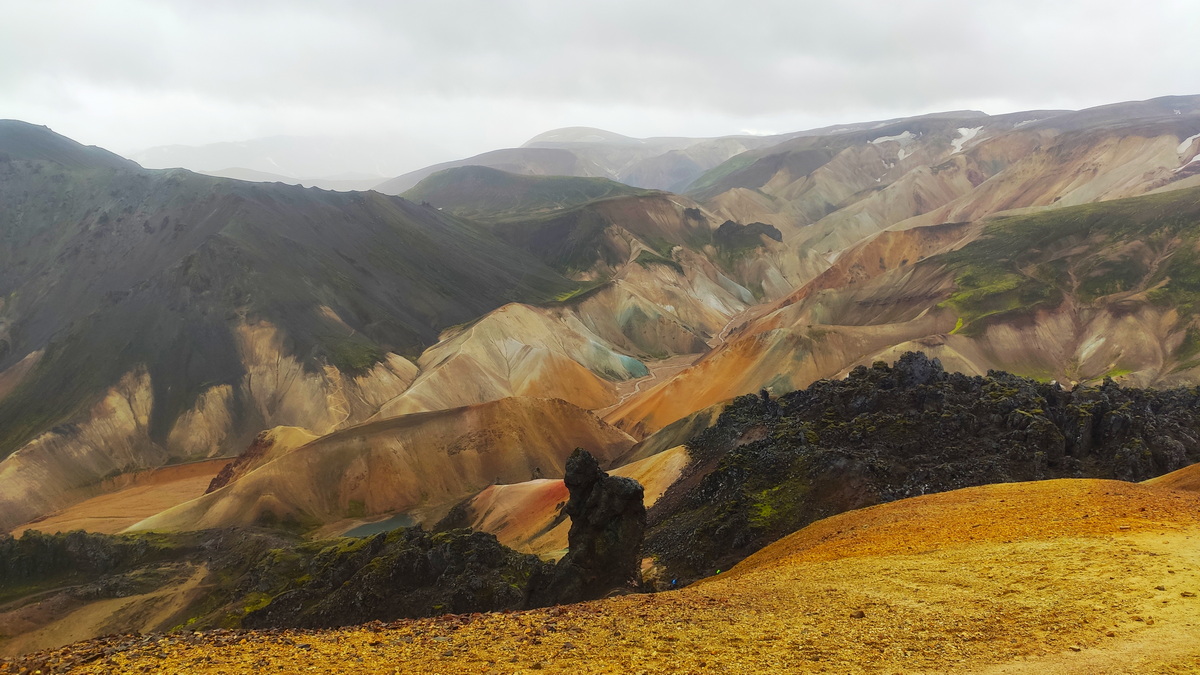
Þórsmörk: Nature's Hidden Gem in Iceland
How to Reach Thorsmork: Þórsmörk, an enchanting nature reserve in Iceland, is accessible from the country's Ring Road (Route 1). Visitors can turn off the Ring Road at Seljalandsfoss waterfall and follow the F249 road for approximately one hour to reach Þórsmörk. The F249 route, although not paved, is accessible by standard 4x4 vehicles during the summer months, making Þórsmörk an attainable destination.
When Is the Best Time to Visit? The best time to visit Þórsmörk is during the summer, typically from late June to early September. During this season, the F249 road leading to Þórsmörk is open, offering milder weather conditions and extended daylight hours for exploration.
Interesting Facts About Þórsmörk:
-
Diverse Natural Beauty: Þórsmörk is celebrated for its diverse landscapes, including mountains, glaciers, gorges, hot springs, rivers, birch forests, and waterfalls. This nature reserve showcases the remarkable variety of Iceland's natural wonders in one location.
-
Home to Eyjafjallajökull: Þórsmörk is famously located beneath the Eyjafjallajökull glacier, which gained worldwide attention during its 2010 eruption. The glacier, known for its stunning beauty, adds to the allure of Þórsmörk.
-
Hiker's Paradise: The nature reserve offers a plethora of hiking trails, making it a paradise for hikers and nature enthusiasts. The Laugavegur trail, one of Iceland's most famous hiking routes, begins or ends in Þórsmörk, allowing hikers to experience a range of landscapes, including volcanoes, hot springs, and canyons.
-
Accessible Wilderness: Despite its remote feel, Þórsmörk is one of the more accessible highland areas in Iceland. This makes it an ideal destination for travelers looking to delve deeper into Iceland's untamed beauty without venturing too far off the beaten path.
-
Convenient Base for Explorations: Þórsmörk's proximity to the Ring Road and its stunning natural features make it a convenient base for adventurers looking to explore the region. It allows travelers to combine top highlights along the coast with the hidden gems of Þórsmörk on their Icelandic adventure.
-
Birch Forests: Þórsmörk is one of the few places in Iceland where birch forests thrive. These forests provide a unique contrast to the rugged highland terrain and offer shelter and habitat for a variety of wildlife.
-
Northern Lights Spot: While Þórsmörk is most popular in the summer, it is also a fantastic location to witness the Northern Lights during the winter months. The area's relatively low light pollution and stunning natural surroundings create a magical setting for aurora sightings.
In Þórsmörk you can explore a captivating mix of nature's wonders in the heart of Iceland. With diverse landscapes, accessibility, and opportunities for hiking and adventure, Þórsmörk remains a hidden gem waiting to be discovered by those seeking a deeper connection with Iceland's untamed beauty.
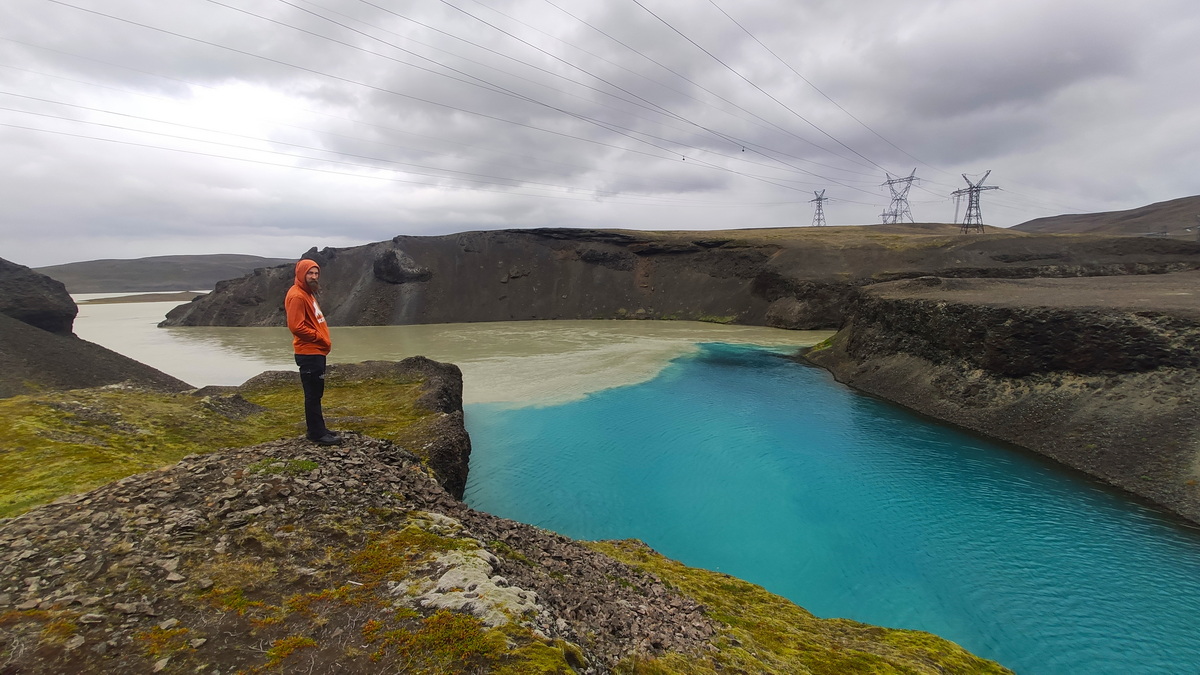
Tips for Exploring the Highlands
- If you plan to drive, rent a 4x4 vehicle and be prepared for challenging roads.
- Fill up your tank before entering the highlands, as fuel stations are scarce.
- For hiking, bring suitable clothing, food, and water. Know the locations of emergency huts.
- Be ready for Iceland's unpredictable weather.
- The highlands are generally open in summer when F-roads are accessible. In winter, they are often closed due to bad weather.
Whether you're an experienced Iceland traveler or embarking on your first adventure, the highlands offer a unique and off-the-beaten-path experience. Consider local experts to plan your perfect highlands adventure.

